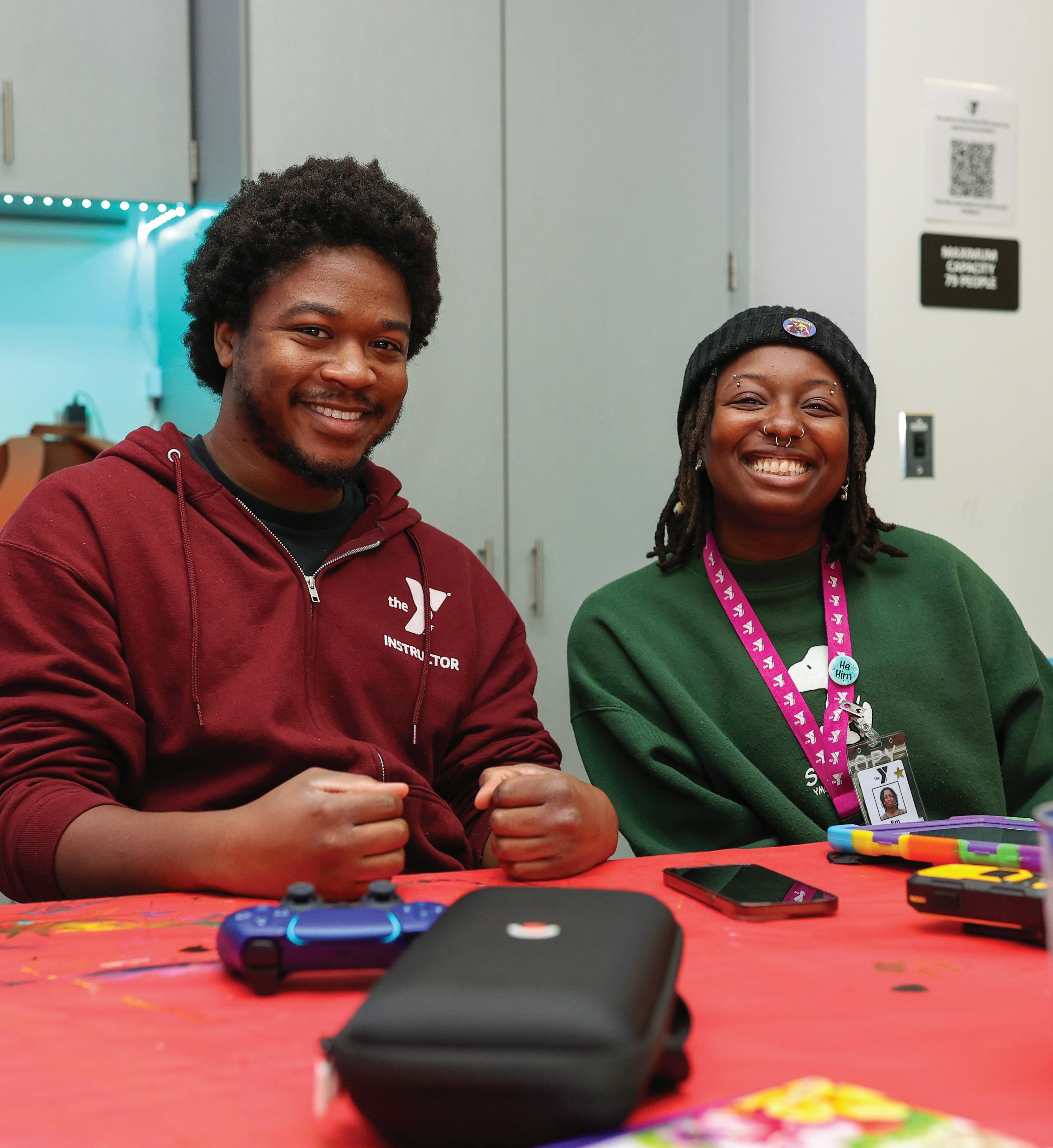WEDNESDAY, APRIL 2,
Oregon acrobatics and tumbling: midseason awards

NikeSkims: Does it Do it?

UA reaches a tentative agreement after 14 months of bargaining; awaiting member approval

WEDNESDAY, APRIL 2,
Oregon acrobatics and tumbling: midseason awards

NikeSkims: Does it Do it?

UA reaches a tentative agreement after 14 months of bargaining; awaiting member approval
Victoria Piñeiro, previously ASUO’s Senate Seat Nine representative of the Departments Finance Committee, resigned after being presented with a grievance letter authored and co-signed by fellow senators and ASUO officers
By Bella Bishop Campus News Reporter
On Feb. 10, former Associated Students of the University of Oregon Senator Victoria Piñeiro resigned from her position as Senate Seat Nine representative of the Departments Finance Committee according to ASUO Speaker of the Legislature, Taliek Lopez-DuBoff.
Currently, the University of Oregon lacks a space dedicated to learning about human rights, something that nearly all other institutions in the Big Ten have.
By Aishiki Nag Opinion Columnist
“Where, after all, do universal human rights begin?” Eleanor Roosevelt, a
The resignation came after a letter was sent to Lopez-DuBoff, that expressed grievances against Piñeiro. The names of the author and co-signers were originally redacted and blacked out by Lopez-DuBoff as he “didn’t think it was really beneficial to share the names” and believed it would “take away from the overall message.”
The letter discussed concerns within the senate regarding Piñeiro’s behavior
beloved former first lady and renowned human rights activist, said. “In small places, close to home.”
In our age of globalization and interconnectedness, every person and institution holds a certain responsibility to reflect the ethos of a human rightsbased framework.
Academic institutions hold an increased responsibility to provide resources and spaces to discuss world events and provide opportunities for students across disciplines with academic, professional and experiential opportunities regarding human rights.
both on and off the Senate floor. It requested that Lopez-DuBoff “deal with this unacceptable behavior … in whatever manner is deemed appropriate.”
According to Ravi Cullop, ASUO chief of staff and co-signer of the letter, the letter was authored primarily by Senator Jamie Dillon and co-signed by eight fellow senators, including
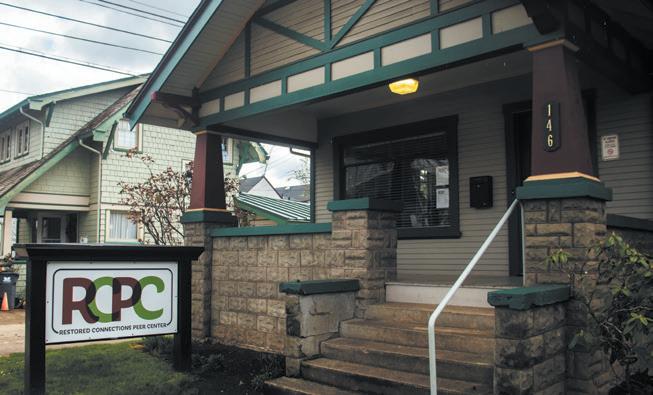

The University of Oregon Portland campus’ MS in Sports Product Design combines science and design in a oneof-a-kind program
By Corey Hoffman Campus News Reporter
Lulu West always loved sports, but found herself headed toward a career in biomedical engineering. That is, until she heard from a friend of a friend of her boss about the University of Oregon’s Sports Product Design program.
Growing up playing a wide range of sports. West had her future planned out: go to the Olympics, then move to coaching with her side passion of art and design sprinkled in along the way.
Her plans shifted in high school when West discovered engineering and STEM, and started working in biomedical engineering and biomechanics in rehab sciences.
An internship with the Lakeshore Foundation, a paralympic training facility based in Birmingham, Alabama, reignited West’s passion for sports. The discovery of UO’s master’s program specialization in sports design and a meeting with the program’s founder, Susan Sokolowski, at the end of 2022 sealed West’s fate.
“It’s been really interesting merging the two (passions) together. Like I can do sport with design and do both in the same sphere. (It’s) really fun,” West said.
The Masters of Science in Sports Product De-






Welcome

EDITOR IN CHIEF
Tristin Hoffman
PRINT MANAGING EDITOR
Mathias Lehman-Winters
DIGITAL MANAGING EDITOR
Alicia Santiago
CAMPUS NEWS EDITOR
Jasmine Saboorian
CITY NEWS EDITOR
Mathias Lehman-Winters
INVESTIGATIONS EDITOR
Tarek Anthony
A&C EDITOR
Jess McComb
SPORTS EDITOR
Brady Ruth
OPINION EDITOR
Beatrice Byrd
PHOTO EDITOR
Molly McPherson
COPY CHIEF
Olivia Ellerbruch
COPY EDITOR
Alex Woodward
VIDEO EDITOR
Kendall Baldwin
PODCAST EDITOR
Evan Giordano
SOCIALS EDITOR
Sydney Wolfe
VISUALS EDITOR
Noa Schwartz
DESIGN EDITOR
Sam Butler
DESIGNERS
Eva Andrews
Adaleah Carman
Gabriela Martinez Contreras
Ash Frieswyk
Taylor Grace
Olivia Hoskinson
PUBLISHER AND PRESIDENT
Eric Henry (X317) ehenry@dailyemerald.com
VP OPERATIONS
Kathy Carbone (X302) kcarbone@dailyemerald.com
DIRECTOR OF SALES & DIGITAL MARKETING
Shelly Rondestvedt (X303) srondestvedt@dailyemerald. com
CREATIVE & TECHNICAL
DIRECTOR
Anna Smith (X327) creative@dailyemerald.com
STUDENT SALES MANAGER
Lola Tagwerker
ACCOUNT EXECUTIVES
Cooper Gast
Elliot Byrne
Ysai Hong
Nate Ghilarducci
Emerald Media Group 1395 University St.,#302 Eugene, Or 97403 (541)-346-5511

Emerald Media Group’s Board of Directors has selected Tarek Anthony as the Daily Emerald’s next Editor-in-Chief. Anthony will begin his tenure in late June.
By Corey Hoffman Campus News Reporter
The Emerald Media Group Board of Directors has selected Tarek Anthony to be the 2025 to 2026 Editor-in-Chief of the Daily Emerald.
Anthony, a current sophomore studying journalism and political science, said he has always been interested in journalism and joined his high school newspaper as a news reporter at the end of his freshman year. Anthony joined the Daily Emerald in 2023, one month before starting at the University of Oregon as a freshman.
“During my senior year (of high school), I got into this pace of cranking out local political coverage, which got me really excited about journalism and firmed up my choice to major in it,” Anthony said. “When I was considering colleges and particularly UO, I frequently looked at the Emerald and would joke about how someday I would want to be EIC there. It's kind of full circle.”
Anthony is the current Investigations Editor and Newsletter Producer at the Emerald, a position he said is “incredibly rewarding.” Anthony previously worked for the News desk covering crime and government.
“Running a desk has been one of the most challenging yet formative and enjoyable experiences of my life. More than the journalism itself, learning how to manage a team of 10+ people with different work styles and personalities has been an invaluable experience, one that I can carry forward to an EIC role and any leadership position I take on in the future,” Anthony said.
As the Daily Emerald Newsletter Producer, Anthony said he gained skills he didn’t have before. Everything from experience with headlines, audience engagement and analytics to email marketing and refining his news judgement. All things, Anthony said, that will help him make “more informed editorial decisions.”
Current EIC, Tristin Hoffman, said that while the position can be difficult at times, she is fully confident in Anthony’s ability to lead the publication and that his passion for journalism is “infectious.”
“With his knowledge of public records, journalism ethics and devotion to impactful reporting as Investigations editor, I’m positive his focus on these qualities of journalism will help lead the Emerald newsroom to new heights this upcoming year,” Hoffman said.
With over 54 articles and counting for the Emerald, Anthony credits the experience gained from hard news reporting and indepth coverage for giving him a more holistic perspective on news and storytelling. Though difficult to choose just one, Anthony said his favorite stories so far are a profile on Jake McGrew and a story on Douglas Barr.
“I really enjoyed doing my Jake McGrew Ukraine profile because it was one of the most moving interviews I have taken part in. I think my proudest one though, would be the Douglas Barr story because of the immediate impact it had on the community,”
Anthony said.
Anthony said his motivations for running for EIC are, among other things, to improve and grow the publication.
“I truly believe that we provide some of the best coverage in the city and with increased
competition, I want to help the Emerald continue to improve and grow. It is also somehow my last year at the Emerald already, and so I really can't think of a better way to close out my college experience helping to lead a publication I value so dearly,” Anthony said.
they can be and said he can’t wait to continue working and expanding the Emerald.
“ “
More than the journalism itself, learning how to manage a team of 10+ people with different work styles and personalities has been an invaluable experience.
-
Anthony has a goal of securing a digital-first approach for the Emerald. With a print redesign occurring under Hoffman, Anthony said, attention can be shifted to online content. Anthony also hopes to build up alliances with other Big Ten student newspapers to strengthen student publications as a whole. In a message to the Daily Emerald, Anthony encouraged staff to be the best that
“Every day, I’m amazed by the creativity and talent in our newsroom. The work you all produce, whether it’s breaking news, indepth investigations, compelling podcasts or sharp visuals, deserves to be seen. That means strengthening our storytelling, amplifying our reach and making sure our journalism has an impact. Whether through strategic coverage, stronger distribution or innovative formats, I want us to keep pushing forward,” Anthony said.
In a message to UO and greater Eugene community, Anthony said he hopes to continue to build trust between the publication and the community and thanked the viewers for the readership and engagement given to the Emerald.
“Every day, I am honored to bear the responsibility of bringing news to the UO and Eugene community. Trust is at the core of everything we do. You count on us to report with accuracy, integrity and accountability, and we don’t take that lightly,” Anthony said. “Our newsroom strives to be a trusted source, a critical watchdog and a reflection of the community we serve. Thank you for reading, engaging and challenging us to be better. We do this for you, and we couldn’t be prouder to serve this community.”
Editor’s Note: This article was originally published on March 14, however was included in this print edition to highlight the change in leadership for our exclusivelyprint readers.
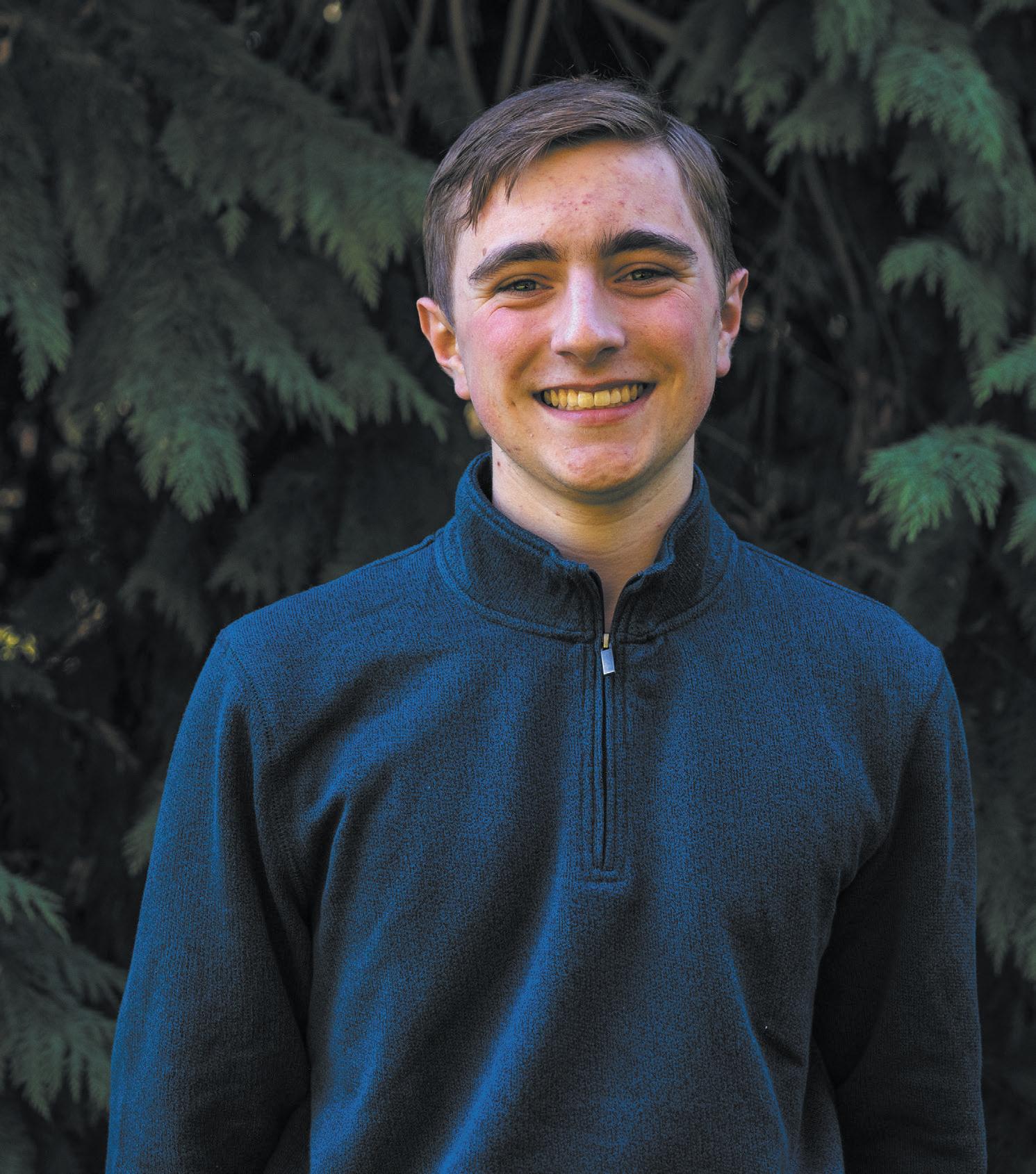




Pacific Islander Student Alliance, a unity group for Micronesian, Melanesian and Polynesian students, emerges on campus
By Angelina Handris Campus News Reporter
Pacific Islander Student Alliance (PISA) is a recently revamped unity group for Pacific Islander students, created in 2025.
According to Co-Director of PISA Zachary Villagomez, Pacific Islander Student Alliance is a unity group that has recently been reintroduced at the University of Oregon. PISA was initially founded in 2007 at Portland State

University. Since then, there have been several versions of a similar unity group at UO prior to 2025, such as the Asian Pacific American Student Union and UO Hui ‘O Hawai’i.
“(At) the University of Oregon, it’s to my understanding that over the past 20 years, there have been several iterations of a Pacific Islander club. It is only recently after (COVID-19) where these clubs kind of started to dissolve,” Villagomez said. “We don’t see ourselves as doing anything particularly different as what those clubs did, but rather we’re helping to reinstate it, get our space back for our people, which we deserve.”
APASU is an organization founded in 1972 with the goal of serving and supporting both Asian and Pacific Islander students and allies.
HOH Club caters to students who are from, connected to or have an interest in Hawaii and hosts events, including an annual Luau in the spring.
“We are an identity club meant specifically for Pacific Islanders, those who generally have roots within Melanesia, Micronesia and Polynesia, and they are the people we intend to serve, but part of our ideology as islanders is that we accept anyone with an open heart … we love to love, (and) we love everyone who comes as they are,” PISA Co-Director Evangeline Paulo said.
Villagomez said that PISA aims to “serve, educate and uplift” Pacific Islander students and also plans to host a variety of events centered around Pacific Islander culture.
According to Paulo, some of the possible events PISA plans to host include but are not limited to a cultural language exchange and educational panels featuring guest speakers, karaoke, folk storytelling nights and cultural food events.
Paulo also said PISA plans to create club merchandise, including sweatshirts and tote bags.
“I’m excited to get toward meeting and being able to share these experiences with other (Pacific Islander) students,” Paulo said.
Villagomez said the long-term goal of PISA is to provide a space for the often “overlooked” Pacific Islander community.
“When people think about Pacific Islanders, they really think of us as being small. They think of the smallness of our islands, but, really, they should be looking at the vastness of our ocean. You could cramp all the landmass in the world and put it in the Pacific Ocean, and there would still be more space,” Villagomez said. “I think Pacific Islanders have so much to offer.”
According to Villagomez, PISA’s meeting times have yet to be determined, but Paulo said the club plans to meet biweekly.
Currently, there are approximately seven members of PISA’s board, according to Villagomez.
“(We want to) build lateral solidarity across campus. This is part of our ideology, the way that our world works as Pacific Islanders is we are very loving, we reach out and we extend our love to our neighbors … we come from the ocean, but here we are staying on other people’s land, and that’s why it’s imperative that we collaborate and we uplift the voices of our brothers and sisters, our Indigenous brothers and sisters, our black and brown and Asian brothers and sisters here at the University of Oregon,” Villagomez said.
sign, founded in 2016 by Sokolowski, is a two year program at UO’s Portland campus that aims to “develop graduates’ proficien(cy) in using science and creative problem-solving methods to innovate products that push the boundaries of society and the field of sport,” according to its website.
According to Sokolowski, in the 1990s, the state of Oregon became a hotbed of sports design following the opening of Nike headquarters and was one motivator for the founding of the program.
“At the time when the program was developed, there really wasn’t a local academic program that trained people in the field.
With an emphasis on small student-to-professor ratios, the program admits up to 20 students with diverse academic backgrounds and areas of interests.
“Sometimes we admit engineers and sports scientists and other sort of tangentially related expertise because we feel product innovation comes at the cross hairs of intersectional thinking, of different ways of solving problems and looking at different aspects of sports products,” Solokowski said.
Research ranges depending on students’ specialization and interests, as the program gives students the flexibility to choose what they want to work on in the sports industry.
Jacob Kauff, a first-year student in the program with a passion for running, always loved sports but never thought he’d be working in the industry in this way.
“Running has done so much for me. So giving back to that sport, I’m really, really excited about,” Kauff said.
Kauff is studying aerodynamics in running, a field he feels is underexplored after Nike stopped researching ways to reduce aerodynamic drag on runners in 2016.
“I’ve been doing a lot of research into that and exactly
what textures (in clothing) break up the air best and how that material innovation might be used for the 2028 Los Angeles Olympics.”
West, who’s in her final year of the program, is working to create compression shorts for T63 athletes, which are unilateral above the knee amputees in track and field.
“I’m creating compression shorts that work with the prosthetic socket and fit better around the prosthetic socket to prevent fabric bunching, irritation (and) sand entry during long jump events,” West said.
Both Kauff and West spoke about the uniqueness of the SDP. As the only program of its kind, the MS incorporates science and research into design. Students take classes in research methodology, biomechanics and physiology to understand how the body works and how to apply it to their designs.
Kauff and West also praised Sokolowski, with Kauff calling her a “legend within the industry.” On Feb. 27, Sokolowski was one of 61 women named to USA Today’s Women of the Year list.
“Being able to learn and get feedback directly from her is such an honor and such an opportunity and her expertise is something that I really appreciate,” Kauff said.
Both students commented on the fast-paced environment of the curriculum and how sewing was one aspect of the design process they had to learn very quickly.
“Learning how to break (the process) down into discrete (steps), research, getting athlete insight, creating a plan, sketching, mood board (and) ideate… that kind of structuring of the creative process I think is the biggest thing that I’ve learned so far,” Kauff said.
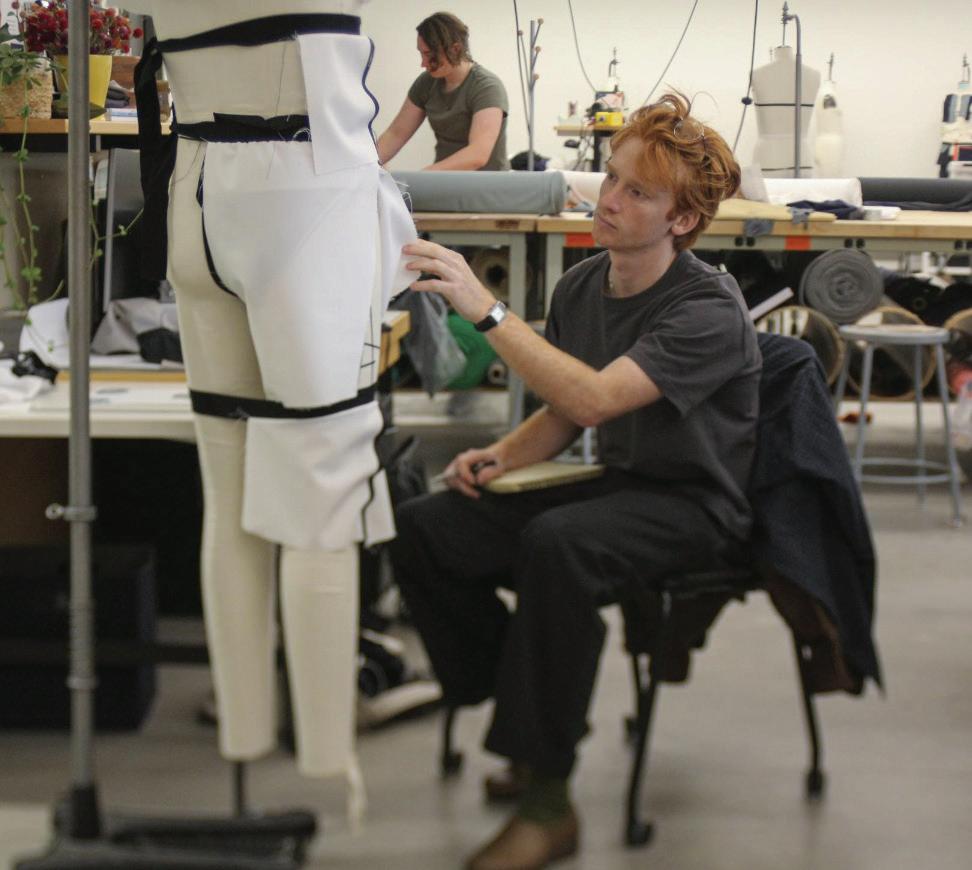
Moving forward, Kauff is looking to continue researching aerodynamics and energy return while West is hoping to work in innovation for adaptive athletes after graduation. With a large workload, the program is demanding but ever-evolving, as, according to West, each cohort experiences different things as the program grows to support students’ needs and feedback.
“I love it. I don’t regret a second of it,” West said in reference to the program.

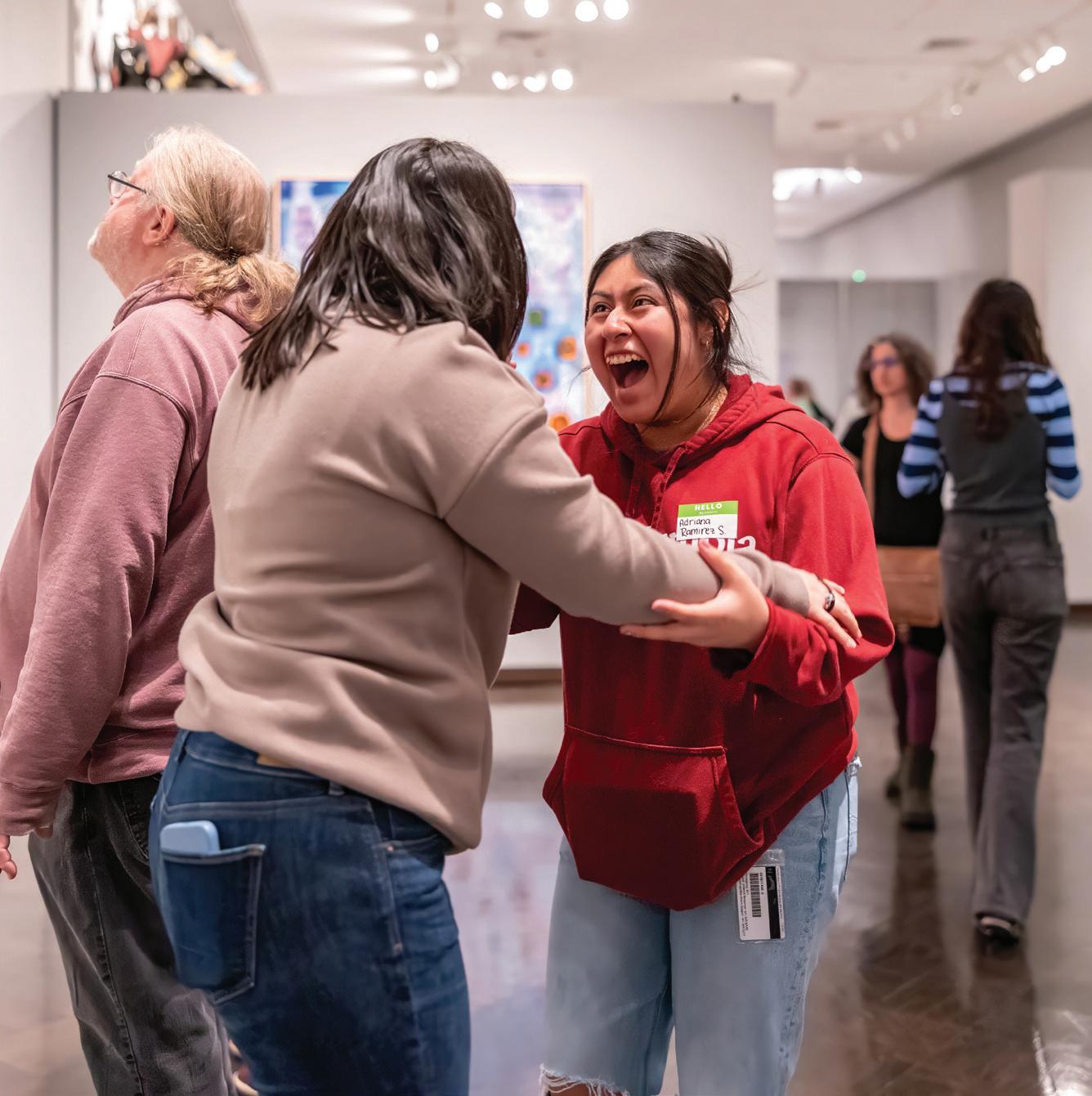


FOR BEST OF CAMPUS
Access health and well-being resources right on campus!
FOR BEST OF CAMPUS
Access health and well-being resources right on campus!
• Medical Care
Access health and well-being resources right on campus!
• Medical Care
• Dental Care
Access health and well-being resources right on campus! Medical Care
• Dental Care
• Medical Care
• Counseling Services

• Dental Care
• Dental Care
• Counseling Services
• Mental Health Access Team
• Mental Health Access Team
• Counseling Services
• Physical Therapy
• Counseling Services
• Mental Health Access Team
• Mental Health Access Team
• Physical Therapy
• Pharmacy
• Pharmacy
• Physical Therapy
• Physical Therapy
• Pharmacy
• Pharmacy
UNIVERSITY HEALTH SERVICES
1590 E. 13th Ave, at the corner of 13th and Agate Call 541-346-2770 for support.
EO/AA/ADA
1590 E. 13th Ave, at the corner of 13th and Agate Call 541-346-2770 for support.
1590 E. 13th Ave, at the corner of 13th and Agate Call 541-346-2770 for support.
EO/AA/ADA
EO/AA/ADA

Daily Emerald has provided a timeline of United AcademicsA and UO bargaining team negotiations, and a guide to what could happen next
By Sasha Love Campus News Reporter
The United Academics of the University of Oregon, a faculty union, began bargaining with the university on Feb. 1, 2024, several months before their contract expired in June.
Throughout the year-long bargaining and negotiating, UA has been pushing for higher salaries as a means to ward off inflation, especially in the Eugene housing market, according to Keaton Miller, associate economics professor and member of UA’s bargaining team.
“If you are trying to buy your first home and start a family it (current salaries) means you can’t afford a down payment and have to eat into (your) savings,” Miller said.
According to UO’s website, UO said that one of the main reasons it has not agreed to larger raises is because of how much money the university is paid by the state to begin with.
The union was set to go on strike just hours before a tentative agreement on salary, the last sticking point at the bargaining table, was reached.
“We were very prepared, we had wagons, gear, signs made… the machine was ready to go and we just needed to turn the key and say go,” Miller said. “It was a really tough call to make, but sometimes new information comes along and you have to change things.”
Miller said one of the main reasons UA opted against a strike last minute was to limit “disruption.”
“A strike is a very disruptive thing to the university, and for faculty, your health insurance can be taken away and we don’t want to hurt students because we are ultimately here to serve students,” Miller said.
Miller also said that federal decisions caused the “ground to shift” and had a significant impact on the agreement.
“(While) funding constraints (were) getting tighter and tighter in the Trump era, we noticed that campus needed a little reconciliation. We had a deal on the table and it isn’t what we are hoping for, but it is better than what some other universities got,” Miller said.
According to Miller, the federal government also impacted UA’s decision to halt the strike in terms of “protection” of faculty and students on visas or green cards.
“I think we bear an obligation to our faculty to evaluate all the risks, and in the past
months, we have seen undergraduate and graduate students across the country on student visas or green cards getting revoked and deported and arrested,” Miller said. “(This situation) really gave us pause and… it did affect our thinking as a bargaining team and as faculty.”
How long has bargaining gone on for?
According to Miller, some bargaining sessions started out rough over disagreements about union dues and positions.
“The administration started this process with some really aggressive moves that would have made the university harder to operate… and some people (members) said that set the tone for what happened later,” Miller said.
After 20 bargaining sessions, UA requested for state mediation on Dec. 6, 2024. State mediation is conducted by the Oregon Employment Relations Board and is a confidential process of negotiations — members of the public or the press are not permitted to attend the sessions.
In early December 2024, UO was offering 4% across-the-board raises for January 2025 and 3% merit-pool increases in January of 2026
UA launched a new website, strengthenuo.org, to consolidate the union’s efforts. UA also held numerous rallies with hundreds of attendees throughout winter term.
On Feb. 19, UA declared it had reached impasse with UO, meaning that both parties were not able to come to an agreement.
During the “cool-down period” that followed the impasse, 92% of faculty in the union voted “yes” in a strike authorization vote.
In March, salary became the “most significant remaining issue between the university and the union,” and UA declared an intent to strike as soon as March 31, the first Monday of spring term.
But on March 30, UA paused all efforts of a strike after both UA and UO reached a tentative agreement.
UA will now hold a ratification vote regarding the tentative agreement by April 6.
The vote opens on April 2 and will be sent out to UA members via email. UA is also hosting an information session that day.
“We (UA) don’t want members to just be voting, we want members to be able to ask questions and understand the terms of the
contract,” Miller said.
The full details of the salary increases and payments members will receive if the ratification vote goes through were published in an email from UA President Mike Urbancic to UA faculty, and are included below. The one-time payment will come in members’ next paychecks, according to Miller.
“While negotiations were thorough and required time to address complex issues, we believe the result serves both faculty interests and the university’s financial responsibilities,” UO spokesperson Eric Howald said. “With the agreement in place and spring term proceeding as scheduled, we can collectively refocus on our shared commitment to educational excellence and student success at the University of Oregon.”
The $2,000 payment is to cover the raise that faculty did not receive in October because of ongoing bargaining sessions, according to UO spokesperson Eric Howald.
“The one-time payment is compensation for the months when faculty members went without an expected pay increase because there is not retroactive pay in the new agreement,” Howald said.
If the strike ratification vote does not pass, the UA bargaining team will go back to mediation and decide upon a new contract and the “membership goes on strike,” Urbancic said in an email to union members.
Miller said UA is not expecting a 100% ratification vote.
“I think it is reasonable for anyone to look at the contract and say ‘I wanted more.’ We pushed each other really hard, and I think neither side is 100% happy with the result but that is part of bargaining and it’s a difficult negotiation when there are really substantial constraints,” Miller said.
According to Howald, the university believes that the results are the best possible outcome to equally serve both the institution and the faculty given UO’s financial position.
“While negotiations were thorough and required time to address complex issues, we believe the result serves both faculty interests and the university’s financial responsibilities. With the agreement in place and spring term proceeding as scheduled, we can collectively refocus on our shared commitment to educational excellence and student success at the University of Oregon,” Howald said.
Tenure related:
One time payment: $2000 (prorated by FTE)
April 2025: 4.5% Across-the-board
September 2025: 3.25% Across-the-board
September 2026: 2% Across-the-board, 3% Merit.
Career Instructors:
One time payment: $2000 (prorated by FTE)
April 2025: 4.5% Across-the-board
September 2025: 2% Equity, 3.25% Across-the-board
September 2026: 3% Across-the-board + unused portion of Equity pool Across-the-board.
Career Researchers:
One time payment: $2000 (prorated by FTE)
April 2025: 4.5% Across-the-board
September 2025: 4.25% Across-the-board
September 2026: 3% Across-the-board
Postdocs: One time payment: $2000 (prorated by FTE)
April 2025: At least 2% Across-the-board
September 2025: At least 2% Across-the-board
September 2026: At least 2% Across-the-board
Limited Duration: One time payment: $2000 (prorated by FTE)
April 2025: 4.5% Across-the-board
September 2025: 2% Across-the-board
September 2026: 2% Across-the-board”







As one of Eugene’s most popular hiking destinations, Spencer Butte sees heavy foot traffic that threatens its fragile ecosystem. City officials and conservationists are working to balance accessibility with preservation—but is it enough?
By Ceci Cronin City News Reporter
Spencer Butte, one of Eugene’s most beloved hiking destinations, draws thousands of visitors each year and its sweeping views and proximity to the city make it a mustsee spot. However, its popularity also presents challenges in preserving the fragile summit ecosystem.
According to Jesse Cary Hobbs, Natural Area Operations Supervisor for the City of Eugene, the butte has its most visitors in the spring when endemic wildflowers bloom at the summit.
“Typically our busiest days are actually in the spring every year when we sometimes see the parking lot is absolutely full and people are parking illegally on Willamette Street,” Hobbs said.
The increase in foot traffic, while a testament to the butte’s appeal, puts a significant strain on the landscape. Over the past 20 years, the city has undertaken extensive efforts to minimize the environmental impact of heavy use.
“The reality is, we have a very popular location in the summit of the butte, adjacent to a dense urban site that is fairly accessible to a lot of people, and it’s led to ongoing impacts over the last 100 years,” Hobbs said.
There was no formal trail leading to the rocky summit before 2015. This led to hikers forging their own paths, which caused severe erosion and damage to native plants.
In response, the city launched the Summit Trail renovation project in 2015 which was funded by a grant from the Oregon Recreational Trails Program and additional city

funding, totaling nearly half a million dollars.
The solution was to construct a well-defined trail to guide hikers along a more sustainable route. To ensure durability, large stone steps were airlifted to the summit via helicopter, replacing the previously exposed bedrock paths.
“We chose one route that we felt would minimize impacts to the native plants and would be something that people would use,” Hobbs said.
Despite these efforts, maintaining the butte’s ecosystem remains an uphill battle. The city initially atempted to deter off-trail use with signage, fencing and educational displays, but many of these measures were repeatedly vandalized.
“Since the rocky outcrop habitat is basically very thin soils that are clinging to bedrock up there, every time someone steps on thin soil like that, they can kick a little bit of it off,” Hobbs explained.
Erosion is one of the biggest threats to the butte’s sustainability. A local trail worker explained that erosion strips away topsoil, making it harder for plants to grow while exposing tree roots. This affects plant diversity and disrupts wildlife habitats.
Additionally, invasive species pose a growing concern since increased foot traffic spreads non-native seeds, which take root in disturbed areas and outcompete native flora.
(The trail worker) said that other challenges include littering and off-trail hiking. Littering, particularly with abandoned dog waste bags, can pollute the environment, harm wildlife and decrease the overall beauty of the trail. Unau-
thorized trail use exacerbates soil degradation and can fragment habitats, making it harder for native species to thrive.
“I think it’s been an interesting challenge for parks and open space in terms of knowing that this place is special and it’s loved by the community, but it’s also kind of being loved to death a little bit,” Hobbs said.
To mitigate these effects, city officials and conservationists are looking for new ways to educate visitors. Hobbs suggested digital solutions such as QR codes that could provide hikers with information about the butte’s fragile ecosystem.
“People go up there and they want to feel like they’re immersed in nature and not being told by the city about what to do,” he said.
Beyond digital resources, some conservationists emphasize the importance of fostering a culture of environmental stewardship.
“There’s a lot of people who don’t grow up in places that have nature like this, and so they don’t have the understanding of the value of these spaces and why they should or shouldn’t do things, like how they can best respect nature and limit their impacts,” Hobbs said.
For those visiting Spencer Butte, the message is clear: tread lightly. The beauty of the butte has made it an iconic Eugene landmark, but preserving its delicate ecosystem requires treading mindfully. By staying on designated trails, properly disposing of waste and respecting conservation efforts, visitors can help ensure that future generations will continue enjoying its breathtaking views.
Federal cuts reduced the funding for the Restored Connections Peet Center, an organization that helps those struggling with addiction. Without additional funding RCPC may have to close their doors by July 1, leaving a gap in human service programs in Eugene.

By Stephanie Hensley City News Reporter
On Feb. 13, the House Budget Committee of Congress voted to look for at least $880 billion in spending cuts for programs within the House Energy and Commerce Committee, including Medicaid.
Due to the congressional focus on Medicaid, nonprofits that rely on Medicaid-funded grants and contracts could face significant financial challenges. With less Medicaid funding, these grants may be reduced or eliminated, forcing nonprofits to seek alternative funding sources.
One such organization is Restored Connections Peer Center located in Eugene. Since its opening in January 2023, RCPC has provided no-cost recovery support, overdose prevention and harm reduction services in Lane County.
On March 5, RCPC announced on their Facebook that they were facing a “critical funding cut.” A petition was linked in the post with a request for Eugene community members to sign it and call on the local government to prevent the closure of RCPC.
Without additional funding, RCPC expects to face a reduction in services, beginning July 1, according to Stephanie Cameron, the founder and director of RCPC.
Cameron explained that RCPC’s funding cut is part of a larger, statewide initiative affecting agencies across Oregon. For RCPC specifically, the funding reduction would result in a 75% decrease in staff.
“We have a drop-in center where people can come in, in whatever state they happen to be in,” Cameron said. “At
times we need 3 to 4 people available to kind of enact our safety plans and make sure that this individual and more importantly the staff on site are all safe. When we reduce our staffing … it does not provide the infrastructure we need to continue to provide those drop-ins.”
Jace Hall, a lead mentor at RCPC, said that a “big part” of what drew him into his line of work was connecting with those he worked with through peer support.
“I’m somebody that gets it, somebody that understands where they are and can help lead them in a direction that will provide them a better quality of life,” Hall said. “And the other thing that comes with lived experience with substance use disorders — there’s other symptoms, right? That could be co-occurring challenges. There’s a lot of other components that come with lived experience, especially if you have a history with substance use disorder.”
Cameron added that the community’s voice and support for RCPC is “the most powerful thing” they could offer during this time.
“I would say there’s not a lack of resources when it comes to somebody being able to get help,” Cameron said. “There is a lack of knowledge about the resources. Had I known that there were resources out there that could help me figure out all the steps to take while I was trying to figure out what steps to take, it would have been a game changer. That’s why I do what I do today.”
As July 1 approaches, the staff at RCPC hope that increased awareness and support from the community will allow doors to stay open and their mission to continue.
Requested amount: $55,700.45 Approved amount: $42,541
Purpose:
New York site visit
Fundraising outcome:
Did not break even after visit, $16,000 in debt to the Lunquist College of Business.
WIB wanted to try to take some of the financial burdens off of ASUO to pay for this site visit by directing fundraising events, following the advice of former senators, according to Sohn. One of the events that WIB cited was the Be Bold Gala that WIB held on Feb. 15. The gala barely broke even and consequently did not generate any funding for their site visit budget and instead left WIB $16,000 in debt to the Lundquist College of Business, according to Sohn.
In the 2023-2024 fiscal year, WIB was approved $48,450 by ASUO for this same type of NYC site visit.
Rut Ramirez Pineda, Samaah Mohammed, Rain Baumann Gwirtz, Rachel Withers, Daniel Vo, Subbu Nagarajan, Joanne Wu, Eleanor Potter and Programs Finance Committee Executive Designee Justin Begley.
What did the letter claim?
The letter claimed that Piñeiro “created a toxic work environment” within ASUO and specifically cited seven instances where senators, ASUO members or student organizations felt disrespected by her actions, five of which are discussed.
The two student organizations that were referenced in the letter were Women in Economics and Women in Business.
The letter noted Piñeiro’s alleged “hostile tone” and “unproductive questions” during the WIB surplus request presentation on Feb. 5 regarding a site visit to New York meant to serve as a development opportunity for WIB members.
According to Eunice Sohn, president of WIB, the organization came prepared with a detailed presentation that included “all the resources, all the details and all the statistics that kind of backed up our request.”
The presenters were met with questions from Piñeiro because it was the second year that WIB made a surplus request of more than $55,000 for a New York site visit trip, according to Sohn. Piñeiro pushed back against funding WIB’s trip with student Incidental Fees at the meeting.
In an interview with The Emerald, Piñeiro said she believed that this was “not a sustainable way to be using surplus.”
On Feb. 10, Piñeiro made a comment during a Surplus Accessibility Committee meeting where she referred to WIB as the “business bitches” and allegedly used other profanity in a professional setting, according to the letter.
When asked about the “business bitches” comment, Piñeiro said that it was said “more just out of frustration” and that it “just came out.”
“I know they put a lot of work into the (fundraising) gala, but I was looking at the fiscal responsibility aspect,” Piñeiro said.
The letter also said that Piñeiro “harassed marginalized groups on the senate floor and during the SAC meeting” that occurred on Feb. 7, referring to the Women in Economics group.
On Feb. 5, Women in Economics brought its request to a senate meeting, where Piñeiro supposedly “mock(ed)” the Women in Economics organization for appearing “unprepared,” according to the letter.
According to Claire Rounds, co-director of Women in Eco-
nomics, and Anna Hooper, Women in Economics’ director of finance, they both had met previously with two ASUO officers about their requests and were given the impression that “everything looked great” with their requests.
The request ended up being a tie-breaker vote in ASUO’s Senate, ending in the approval of the request at a lower amount according to Hooper.
Another incident cited in the letter mentioned an interaction that is presumed to be between Senator Jordan Ackemann and Piñeiro during Budget Bonanza, ASUO’s final budget hearing of the winter term according to Piñeiro.
Ackemann assured that “this disagreement was resolved as soon as I (Ackemann) sat down with Victoria after my presentation, and there was not any animosity between myself or Senator Piñeiro after the interaction.”
Ackemann said he “did not approve” of this interaction being used as “evidence against her (Piñeiro) in a letter I was not asked to sign and had no knowledge about.”
What was the aftermath of the letter?
Piñeiro was in class when she was notified about a meeting being held on Feb. 10 with Lopez-DuBoff and Tiera Garrety, ASUO’s deputy speaker of the legislature, but she was not sure of the contents of the meeting. At the meeting, Piñeiro was given the letter to read.
At the request of Piñeiro, the letter was read aloud by Senator Prissila Moreno during the public forum section of the Senate meeting on Feb. 12.
Piñeiro also requested to have the letter entered into the public record at this same meeting.
“I was just comfortable with having it aired out there because I don’t think that’s a clear perception of my work. So, that was kind of my thoughts there. If you’re gonna deliver this to me, I want everyone else to hear it at that point, too,” Piñeiro said.
According to Piñeiro, she was not made aware of or approached regarding the concerns mentioned in the letter before the meeting.
“(The concerns) were never indicated or anything like that to me. It was crazy,” Piñeiro said.
Piñeiro said the incidents cited in the letter were not an accurate representation of the work she has done and continues to do with student organizations overall.
“I also work at (the university), and my whole job there is working with (organizations). I reach out to organizations and Continued from page 1
put on cooking classes for them and do things like that. So, that just really surprised me, too,” Piñeiro said.
Senators, including Moreno and Eleanor Potter, did not agree with the way that the situation was handled and expressed “disappointment” in the way in which the grievances were presented to Piñeiro.
“To sit in that meeting (SAC) and hear those things and not say like, ‘Hey, let’s not talk about them (organizations) like that,’ and to just sit there and even laugh at the things that she was saying and then draft a letter is really disappointing,” Moreno said.
According to Senator Rachel Withers, Piñeiro’s situation could have been indicative of deeper issues within ASUO.
“It’s a very deeply rooted issue. It wasn’t just like she said this one thing that turned their backs. She kind of set a tone that it was okay or normalized to be kind of aggressive and rude towards others,” Withers said.
In terms of previous conflicts within ASUO, Withers said the previous “issues she was made aware of … happened away from the public eye.”
This situation was different because of Piñeiro’s request to read the letter aloud.
Withers said that she personally struggles “when people act the way that she (Piñeiro) does” because “it really makes people afraid to speak,” both in terms of student organizations and ASUO members.
“Hearing that someone would say those horrible things.
“ It’s a very deeply rooted issue. It wasn’t just like she said this one thing that turned their backs. She kind of set a tone that it was okay or normalized to be kind of aggressive and rude towards others.
-Rachel Withers, ASUO Senate Seat 12

“That’s just such a terrible workplace environment to be in,” Withers said.
While thee letter claimed that the actions of former SenatoPiñeiro created toxicity in the work environment within ASUO, according to Cullop, Lopez-DuBoff and Withers, there have been internal conflicts within ASUO in the past. The internal conflict consisted of“name-calling” and “talking about ASUO members behind their backs.”
“There’s drama within ASUO. It’s not entirely avoidable, but largely, the stuff that I’ve seen in ASUO has been work-related … And you know, while those things can sometimes evolve into disrespect, I’ve never seen something in ASUO that seems so arbitrarily personal,” Cullop said.
As observed by The Daily Emerald at several senate meetings during the winter term, Lopez-DuBoff, prefaced each meeting by requesting that all senators be respectful and mindful of their tone when speaking on the senate floor.
Senators Elizabeth Sgro, Bella Esbeck, Rut Ramirez Pineda, Jamie Dillon and Rain Bauman declined to give a formal comment on the matter. The following senators did not respond to various requests for comment: Marisol Peters, Anthony Lopez, Samaah Mohammed, Daniel Vo, Eleanor Potter, Jess Fisher, Subbu Nagarajan, Joanne Wu, Franchesca Pagtalunan, Erin Luedemann, Andrew Ducharme, Emily Cole and Zoe Jenkins-Hiscox. Senator Dillon declined to comment on the situation.
Feb. 5 ←
WIB surplus request presentation for NYC trip & Women in Economics presentation.
Feb. 7 ←
SAC meeting for Women in Economic where Piñeiro allegedly ‘harassed’. groups
Feb. 10 ←
Surplus Accessibility Committee meeting where “business bitches” comment was made.
10:22 p.m. Piñeiro sent in resignation letter.
Feb. 12 ←
Moreno reads the letter aloud to the Senate and enters it into public record.

Brianna Carrasquillo
is a Journalism Master’s student and lacrosse player at the University of Oregon.
As an opinion writer for the Daily Emerald, she covers self-care, sports, wellness, politics and mental health and enjoys thrifting, running or hiking in her spare time.

By Brianna Carrasquillo Opinion Columnist
In 1992, The Sporting News dubbed Michael Jordan “Man of the Year.” In 2023, GQ Magazine awarded Kim Kardashian the same honor. The basketball legend and media mogul could not be more similar in 2025 with their uncanny abilities to influence. Both Jordan and Kardashian are connective tissues, leveraging their name and likeness through a web of strategic partnerships.
“Kim (Kardashian) is the Michael Jordan of the influencer generation,” Skims CEO Jens Grede said in a 2023 interview comparing the two global icons. With unmatched cultural sway, these accomplished hegemons draw parallels at the intersection of power and persona in a world where identity is the ultimate currency.
From everyday loungewear to the perfect shapewear corset under a formal dress, the range SKIMS has is truly remarkable. From Team USA, WNBA, NBA and now… Nike?
I’m sure you’ve heard about NikeSKIMS, the burgeoning brand that will tether NIKE, Inc.’s
The emerging brand has promise, but some aren’t convinced
approach to activewear and functional training with SKIMS’ mission to enhance the female form for all physiques.
Since the news released on February 18, Nike’s market cap has grown by almost $5 billion, a 180 degree turn from a fiscally poor performance in 2024. This year, it’s predicted to return to the starting lineup alongside heavyweights like Lululemon and Alo Yoga.
The press release made me initially reminiscent of Nike’s “The Force is Female” campaign circa 2017. My “Force is Female” branded Air Force 1’s were a staple to my “cool girl” wardrobe. But at 15 years old, I hadn’t considered the social implications of the movement. As a master’s student at the SOJC, I feel I have a leg to stand on when it comes to well-executed campaigns.
I personally love what NikeSkims is about. It combines two behemoth brands for a healthy balance of athleticism and body-positive ethos. As an athlete at a Nike school, as much as I love the gear, Nike runs notoriously small in their women’s clothing. SKIMS, on the other hand, provides a product that melts seamlessly onto your skin, hugging every corner in the most strategic of ways. Marrying the two is the pinnacle of function and fashion.
University of Oregon, the birthplace of Nike, is where the visionary idea mutated into a transnational brand that continues to inspire athletes worldwide. With these associations in mind, it’s important to consider the high expectations set to foster grassroots innovation and inclusivity.
What better way to gain insights on the weight of the collaboration than by hearing from
SOJC students? Advertising and Brand Responsibility (ABR) Master’s student Ash Frieswyk shared her thoughts on the collaboration:
“As far as product goes, it could be a great combination. Let’s be real, that’s not the only factor that plays into this; these are two large and pretty different brands,” Frieswyk said. “Nike has a reputation of being supportive of women in sports, backing the BLM movement and showing the hard work and dedication that goes into being an athlete. They highlight a lot of great athletes that are an inspiration for a lot of folks.”
Nothing says body positivity like functional, form-fitting activewear that moves with you, empowering your every step. But Frieswyk argues differently, offering a refreshing perspective on the portrayal of female athleticism in fashion and its potential clash:
“Nike gives a platform to showcase (incredibly) powerful women athletes who are our friends and our neighbors. Skims is selling a slice of superficial luxury that is exhausting old tropes of highly sexualizing women,” Frieswyk said.
“Skims is very much an extension of the Kim Kardashian brand … I think she’s a bit out of touch with the realities of your everyday American. Nike is by no means perfect, but when I think of Nike I think (of) homegrown athletes, folks who worked their asses off to reach their dreams.”
With a domestic debut slated for spring 2025 and a global release in 2026, I’m eager and intrigued to witness the next evolution of female-driven sportswear. This collection holds promise to some but not all, especially in a market dominated by luxurious comfort.
Currently, the majority of Big Ten institutions, have dedicated programs and course offerings focusing on human rights education and community action, except the University of Illinois, Pennsylvania State University and the University of Oregon.
Due to this critical gap in programming, UO doesn’t have the resources to empower students to engage critically in human rights-centered dialogue focusing on local, national and global levels.
As of Oct. 30, the Associated Students of the University of Oregon (ASUO) Senate unanimously passed a resolution in support of establishing a task force for the human rights center; this proposal was sent to the Office of the Provost to officially establish the task force for the human rights center.
The three main goals of the proposal are to enhance understanding of global human rights frameworks, expand opportunities for students

and create a platform for ethical discussion on global human rights issues.
The UO Coalition for a Human Rights center is comprised of a broad coalition of supporters, notably two student organizers, Charles Petrik and Sophia Barghouti.
Petrik, a senior studying global studies and geography, talked about some of the reasons behind advocating for the human rights center on campus.
Petrik said the encampment and protests on campus last year highlighted the need for dedicated spaces on campus to discuss global human rights and promote free inquiry surrounding larger social issues.
“When something happens here, or when something happens at home, or what’s going on about the homelessness crisis in Eugene, there’s just a lack of institutional support there for students to be discussing different perspectives,” Petrik said.
The center would also provide institutional support to manage the different interests of a variety of students, which was something the university particularly struggled with last year.
Barghouti, a junior studying political science, Middle Eastern and North African studies and Arabic, said that with the Israel-Hamas war, there was a lack of critical dialogue happening. Barghouti, during discussions she hosted within her dorm to share her experiences as a Palestinian-Lebanese student, realized that “this is something that the University of Oregon needs to institutionalize.”
“We believe that the university should speak
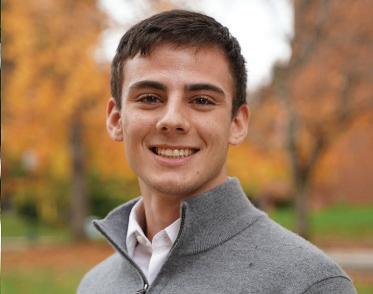
out in a way that protects the core function … and the university is a place where students come to learn and pay to get an education, and anything that inhibits the sustainability of that (goal), the University should speak on directly,” Petrik said.
With a volatile federal government and constant international changes, the university needs to be receptive to their students and create spaces for students to engage with topics independent of university influence.
Barghouti and Petrik met with a few directors across the Big Ten regarding the establishment of the center and reported back with the different structures available to integrate the center onto campus.
“The goal of the university is to enhance career pathways and experiential learning, and the Human Rights Center would solve one of those key goals that the university wants to solve,” Barghouti said.

Nag is a sophomore, double majoring in Political Science and Global Studies. She loves all things local government and state policy.














Look to these Eugene pubs and breweries to find drinks and appetizers for under $10
By Andres Baisch Arts & Culture Writer
Now that winter is behind us, a cocktail, an appetizer and a good laugh with friends can be a fun way to jump-start the weekend. These Eugene bars and breweries are ready to welcome groups to happy hour across town..
Sunriver Brewing Company
Sourcing beer from Sunriver, this brewery at Oakway Center is ready to pour you a beer full of hops from Deschutes County. Sunriver’s deals are found during “Hoppy Hour,” which runs all day on Monday and Tuesday through Thursday from 3 to 5 p.m.
General Manager Sarah Shelton says that on sunny days, guests can visit the outdoor patio and enjoy $5 glasses of wine and $2 off draft beers. Sunriver Brewing also has a few specialty cocktails only available during the designated times.
Shelton says one of the exclusive drinks is called the Holy Cow, and is made with Sunriver Brewing’s Nitro Cocoa Cow chocolate milk stout beer. The drink is served like a martini, mixed with vodka and hazelnut liqueur.
Shelton explains how Sunriver has 19 beers on tap and only six are year-round. For the spring, Sunriver carries a “Mai Bok Bok,” a play on a seasonal spring lager. For a fruitier profile, try Sunriver’s award-winning beer, the Fuzztail, named after Fuzztail Butte in Sunriver, which is a popular hiking site.
Carlita’s Rooftop
This rooftop bar at the Gordon Hotel is often overflowing with guests when the weather gets nice.
Carlita’s offers Happy Hour everyday from 4 to 6 p.m., as well as from 9
p.m. to close on the weekdays. Tacos and cocktails are what General Manager David Palmermay says guests should visit Carlita’s Rooftop for.
Every month, Palmermay says Carlita’s Rooftop does a special on margaritas and tacos. For April, a hibiscus margarita will be paired with a tequila-lime marinated shrimp taco. Tacos are $5.25 during Happy Hour, and all drinks are $9.50.
“I’m a big mezcal guy, so I’d get our Ay Dios Mio, which is a little spicy,” Palmermay said. “Paired with some ahi ceviche, you get the citrus from the shrimp and the sweeter, spicy feel from the cocktail.”
Palmermay said that when the sun is out, the views from the rooftop are some of the best in Eugene. In terms of atmosphere, Carlita’s Rooftop may be one of the most aesthetically pleasing bars to enjoy with friends.
McMenamins North Bank
McMenamins has locations on High Street and East 19th Avenue, but if you’re looking for a drink with a view of the Willamette River, try checking out the North Bank location.
All McMenamins across town have Happy Hour from 3 to 6 p.m. and from 10 p.m. to close. During this time, beers are a dollar off, and cocktails are $2 off.
General Manager Lisa Brannon said their Tiki bar on the river makes for a fun atmosphere at happy hour. Brannon said their abundance of rumbased drinks are staples at the pub.
Moving into spring and summer, the seasonal taps will be a lighter selection of draft beers.
Whether you’re craving tacos, margaritas or a chocolate milk stout beer, these bars are ready to welcome you in. After all, it is 5 o’clock somewhere.

By Elin Lawrence Arts & Culture Writer
Spring is right around the corner, and with style trends shifting throughout the year, this season brings a whole new lookbook. This year is all about chunky, big pieces and making a statement. Minimalism and simplicity is out, and most people are thrilled to see it. Footwear is a key aspect of this spring’s fashion trends, with platform sandals, thick-soled sneakers and sculptural heels taking center stage.
Bags are getting bigger, too, with tote bags and slouchy oversized purses becoming musthave items. Chunky jewelry like oversized earrings and layered necklaces are here to spice up simple outfits and make fashion easier.

This season is all about people who like to experiment with fashion and branch out of their comfort zones. It is all about playing with different textures and adding more color and vibe to your closet. Fashion is such a key aspect of people’s characteristics and who they are as people. What you wear and how you wear it can speak loudly to the people around you and if you know how to do it right it can help you stand out in any room you walk into
Prepare for a closet clean out and freshen up your looks with these top five spring fashion trends.
Chunky jewelry
The most recent trend on this list is chunky and layered necklaces. The brand Scandivv recently became famous on TikTok for its bold, ostentatious pieces. The brand was started up by a young woman in Sweden who makes and sells these fun, chunky necklaces and makes her own tops as well. These jewelry statement pieces add so much to a simple outfit, making it easier to dress down, especially in warmer weather.
High and big boots
This trend is a return from last summer. You will definitely see a lot of influencers pairing a chunky boot with a denim skirt or micro shorts this spring and summer. This trend may not be
practical for the heat, but it’s a nice change of pace from the time-honored sneakers and shorts uniform of summer. You can find a lot of these looks on Steve Madden and Frye.
Western wear
This trend has been on the cusp for a while now, but it’s finally receiving the recognition it deserves this spring. This trend is another form of the style above, but with cowgirl boots, denim on denim and a whole lot of fringe.
Preppy
This spring, you will find yourself surrounded by blue stripes, linen and possibly a few sweaters wrapped about people’s shoulders. This trend is perfect for the warmer weather with its light and loose style. Looking cute in a hot classroom just got a whole lot easier. This style has been seen previously, but coming in fresh this spring is the comeback of tennis skirts for a classic country club look.
The sequins trend was seen all over the internet during spring break as photos of tanned vacationers in sparkly mini skirts and flowy tops circulated social media feeds. You can easily pair a sequin skirt with a basic outfit. Many of these viral pieces can be found on Peppermayo, a popular Australian brand at the moment. White tanks have appeared to be the most trendy base for these sequined pieces, often accented with a chunky necklace.
This spring is all about statement pieces for less effort. Ruffles are more of an incoming trend, but will mostly be seen on tops paired with jeans. As fashion is changing over the seasons, these trends are showing us a shift toward embracing your true self and creativity. Whether it’s the boldness of sequins, the classiness of preppy attire or the funky charm of western wear, there is a place for anyone.
Spring 2025 is about stepping outside of the ordinary and celebrating fashion as a form of self-expression. So, get ready to make a statement and refresh your wardrobe with these must-have styles!















The Ducks outscored the Scarlet Knights 41-3 over the two-game series
(Miles Cull/Emerald)

Oregon football resumed spring practice on April 1. The team will practice Tuesdays, Thursdays and Saturdays up until the spring game on April 26.
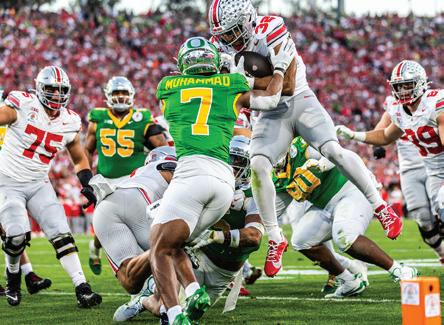
FRIDAY
April 4, 2025
Stanford Invitational
The Ducks Track and Field team gears up for the Stanford Invitational.
The Ducks have thrived this season, and the Daily Emerald is handing out recognition to some of the athletes driving Oregon’s success
By Owen Murray Sports Reporter
For Oregon acrobatics and tumbling, the season isn’t quite over yet. The Ducks, though, have five wins under their belts and are essentially postseason locks. It’s time to hand out some awards — to the best-performing athletes this season (so far). The Daily Emerald took a look at an outstanding freshman class, comeback stars and our athlete of the year.
Freshman of the Year: Angelica Martin (base)
The Ducks have a ton of talented freshmen to whom this award could’ve gone. Three freshmen (Morgan Willingham, Carly Garcia and Briya Alvarado) have been nailed-on starters in tumbling. Top Cassidy Cu has been part of one of Oregon’s most reliably high-scoring events (five-element acro).
But this award goes to base Angelica Martin. The Delaware native has shone across multiple events this season: she competes with Cu in five-element, is a part of both the compulsory and synchronized pyramid heats, the toss event and the team event. She’s earned four well-deserved national recognitions from the NCATA, including three Freshman of the Week honorable mentions and the overall award following Oregon’s win over then-No.
3 Gannon University on March 23. Five-element is averaging a 9.733 score this season, the best of Oregon’s acro heats.
Martin will be in competition for the season-end national award, and while Baylor University redshirt-freshman base Leavy McDonald will pose stiff competition, Martin will absolutely be in contention. The last Oregon freshman to win the award was base Blessyn McMorris in 2022.
Comeback Athlete(s) of the Year: Haley Ellis (top/tumbler) and Blessyn McMorris (base)
This award is split between two athletes who have bounced back from season-ending injuries in 2024 to have strong years in 2025. McMorris was named Athlete of the Week after Oregon’s first
meet, a win over Morgan State University where she recorded three 9.85 or higher scores in the pyramid heat. She was also a part of Oregon’s perfect-10 pyramid against Baylor. Ellis also returned to the starting lineup with aplomb. The top/tumbler is featured in Oregon’s standout bling event, where she participates regu larly in both the quad (avg. 8.925 points when Ellis starts this season) and six-element passes (9.738).
Athlete of the Year: Bella Swarthout (base)
Swarthout gets this award in just her second year with the Ducks, but it’s more than warranted. She’s all over the starting roster for Oregon: the base competes in three of four compulsory heats, seven-element acro, all three pyramid heats, the open toss and the team event. She excels in all of them. Oregon earned its first 10.0 of the season in the open pyramid against Baylor on Feb. 22 with Swarthout starting at mid-base. Last year, she stepped in as the bottom base due to the injury to regular starter Mc Morris. This year, the two are in the heat together. Her versatility is what seals this award. Oregon struggled against Gannon with its seven-element acro skill (which did not yet include Swarthout) and scored just 8.45 of a pos sible 10.0 points. The following week, Swarthout and top Bethany Glick debuted a new-this-season, slide-to-split skill that would go on to score 9.85 in back-to-back meets against University of Mary Hardin-Baylor and Quinnipiac University. The two also integrated the skill into Oregon’s team event, which has had a regular start value advantage against nearly every team the Ducks have faced.
Every Oregon win has Swarthout’s fingerprints all over it. She earned the honorable mention for the NCATA Athlete of the Week category following Oregon’s win over UMHB, where six of her eight total heats that week earned a 9.50 or higher score. Any milestone Oregon achieves will likely run through the sophomore, and that’s more than enough to give her this award.
Oregon softball's pitching staff being healthy is key going forward
By Joe Krasnowski Sports Reporter
The point, again, feels redundant at this stage, but it’s nonetheless worth repeating because it’s the reason why most college softball teams might struggle late in the season: Oregon softball’s pitching staff must remain healthy, and effective.
The suspicions of the winter, which became legitimate fears in the early going of the regular season, turned into a minor panic when transfer southpaw Staci Chambers went down with injury.
Chambers is healthy now, but the problem remains — head coach Melyssa Lombardi’s Ducks are always an injury away from another pitching disaster.
Incredibly, the Ducks were able to get through a double-header filled early slate of the season on just three arms. Taylour
Spencer, Elise Sokolsky and Lyndsey Grein have been tremendous thus far in 2025. Still, most teams rely on four or five reliable arms for their success.
Chambers’ return certainly helps.
“It gave me chills,” Lombardi said of Chambers making her first appearance since Feb. 8. “Standing out there seeing Taylour nodding to come replace her. I think our players get it, but our fans, the cheers they gave her to take the mound, all around was really cool.”
Although short, Chambers returning to the circle provides the Ducks with a much clearer path going forward in conference play.
She’s the only left-handed pitcher on the roster and already slots in as a reliable bullpen arm. She had a 2.07 ERA last season at California State University, Fullerton.
In the past, Lombardi has entered the season expecting to rely on a true ace to take on most of the work.
The Ducks, however, have gone a different direction with their pitching depth this season.
They have a young core of Spencer and Rowan Thompson. But, they also have the


three veteran arms who have taken on a good amount of the work.
Chambers’ return can only help mitigate some of those workload concerns later on in the season.
“We’re all so different,” Grein said earlier this season of her fellow pitchers. “Everyone has their own specific talent. I’ve learned so much from Taylour, Elise, Staci and Rowan … we all just want to make each other better.” Lombardi shared a similar sentiment: “This is
the deepest staff we’ve had since I’ve been here. They are all so different, not one is the same.”
Those unique qualities have been a big part of the Ducks’ surge to start the season. Oregon has maintained a top-10 spot in the polls since its hot start and has the second-lowest ERA in the nation at 1.73.
“It’s always on to the next,” Lombardi said. “We win a game, celebrate great, (and) on to the next. When we are at our best, it’s constantly on to the next.”

Stephen King novel about a
Homer’s wholesome
“In my opinion ... ”
Not trans 54 Therapist’s statement, or what can be said about the first parts of 20-, 28-, and 46-Across?
61 Skip over 62 __ bean 63 Nest on a cliff 65 Santa Monica landmark
te llamas?”
In the style
“That true?”
Itty-bitty
Site with handmade stock
Crop-sharing orgs.
Wipe data from
6 Nadal’s nickname
7 Coats with frosting
8 Warm jacket lining
9 Stuffed with 10 “When you’re not strong” song 11 Like operas and oratorios
12 Opere e oratori
13 Chuck 21 Shoe designer Jimmy
22 Japanese plum
25 Drop in the mail
26 Language learner’s topic, for short
27 R&B singer Khan
29 Classic Jaguar model
30 Wild dog of the Australian Outback
31 Car rental option
32 63-Across nester
36 Head up
38 Wedding couple’s wish list
40 Get into
Avails oneself of
Excited toddler’s
5 Not beyond one’s solving skills
41 Pause before deciding
44 Violin or guitar section
47 Columbus sch.
48 Genre with unofficial sequels, familiarly
49 Skip over 53 See-through 54 Easy running pace
55 Give off
scores

